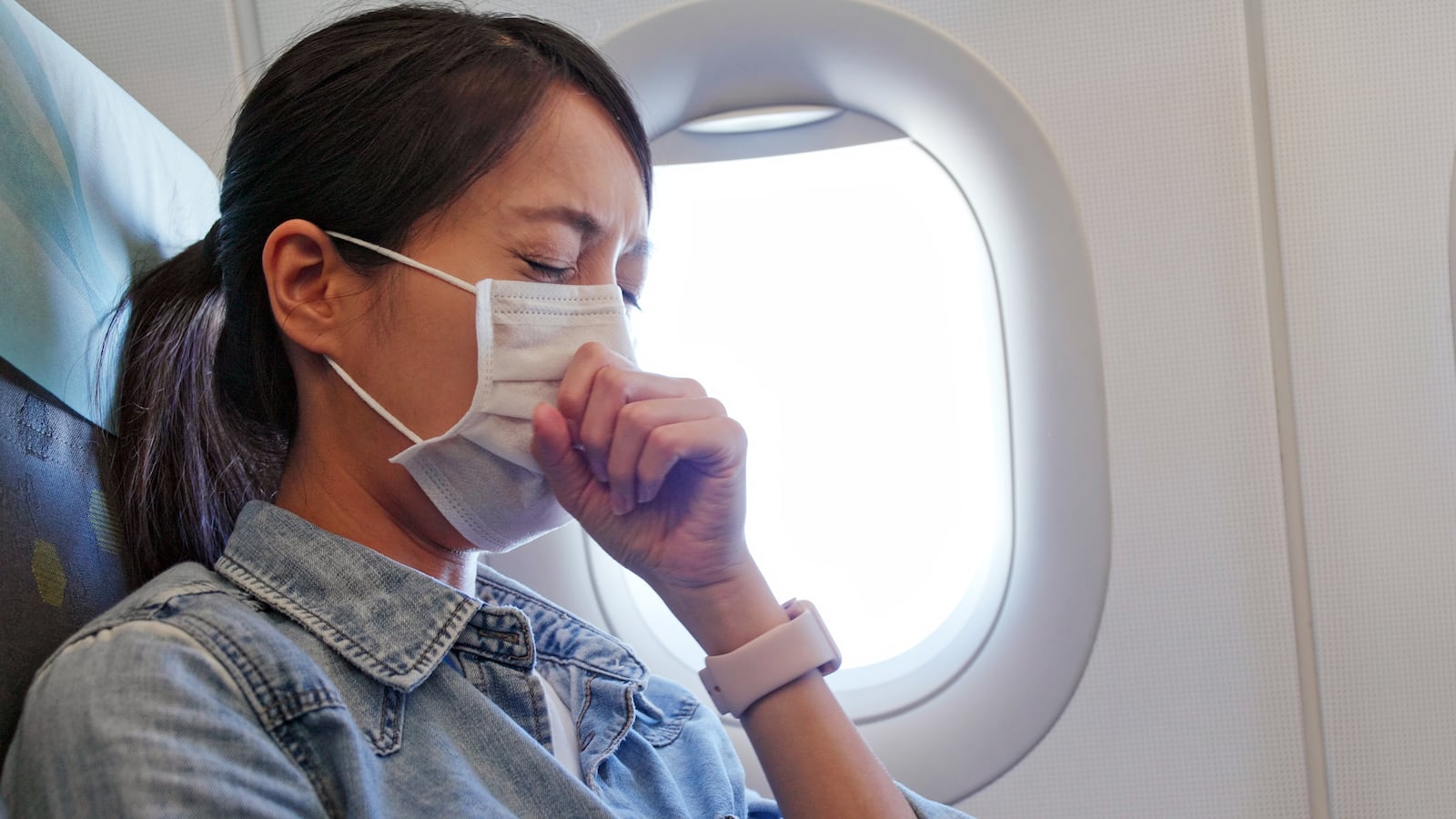It’s every holiday traveler’s nightmare: an airplane seat right next to a sniffling, sneezing passenger who’ll pass on the flu.
But according to Robin Thompson, a mathematical epidemiologist at the University of Oxford and the lead author on a pre-print paper published in bioRxiv, the traveler-to-traveler transmission of flu could be a good thing. In fact, it could prevent the next global flu pandemic.
That might seem counterintuitive, and Thompson agrees.
“High rates of airline travel in the present day might be assumed to have increased the chance of a devastating pandemic,” he told The Daily Beast via email. “For pathogens unlike any seen previously, this is almost certainly true.”
But there’s a silver lining to frequent travel among diverse populations. “For pathogens that are related to previous ones—such as different strains of flu—increased levels of travel may have reduced the chance of a pandemic occurring, through cross-immunity,” he said.
The science behind cross-immunity is simple: When a person gets exposed to a low-virulence strain of the flu—the kind that causes minor, cold-like symptoms—from a fellow airplane passenger, their immune system learns how best to identify the proteins on the surface of the virus.
If that person is later exposed to a high-virulence strain—the kind that can cause hospitalization, or even death—their immune system is better primed to defeat the virus.
It’s the logic that underscores the major part of modern flu prevention, including the flu vaccine.
Thompson’s theory, which will be published this December in the Philosophical Transactions of the Royal Society B, was born out of a series of mathematical models. First, his team modeled a low-virulence strain of a disease as it moved through a hypothetical population. Then, they modeled a high-virulence strain—the kind that would cause a global pandemic.
In some cases, they assumed that cross-immunity was low; in others, they assumed it was high.
When cross-immunity was low, Thompson explained, frequent air travel just helped the high-virulence pandemic spread faster. But when cross-immunity increased, frequent air travel “drove more cases in the low virulence strain epidemic, which then protected hosts against the high virulence strain—thereby reducing the chance of a pandemic.”
Sure, this is all math. But historical evidence could support this theory. One of Thompson’s examples is the Russian flu pandemic of 1889 and 1890. Twenty years later, when the far worse pandemic of Spanish influenza struck and killed more than 50 million people, older adults died at a lower rate than younger ones, possibly because of previous exposure to the previous Russian flu pandemic.
“There are a number of theories as to why this might be the case,” Thompson said, “but one explanation is that older individuals who were alive during the earlier 1889-1890 Russian flu epidemic were partially cross protected against the virus in 1918.”
And we know that when people travel, illness follows. A March 2018 study from the Proceedings of the National Academy of Sciences reports that an airplane passenger with an influenza-like disease infects about 0.7 people per flight.
But sometimes, there’s more. In September, 100 of the 500 people aboard an Emirates Airline flight from Dubai to New York City reported a high fever and coughing, and 10 were quarantined. One unlucky passenger tweeted that the plane was like a “flying infirmary.” Influenza was the suspected culprit.
That Emirates flight came at the tail end of the hajj, the annual Muslim pilgrimage to the Saudi holy city of Mecca. A 2009 study in the Annals of Thoracic Medicine revealed that the hajj is a hotbed for illnesses like the flu, because it concentrates vast numbers of people from a large number of countries in the same place. By Thompson’s logic, the hajj could also provide helpful cross-immunity.
There are a few caveats. Thompson’s model isn’t specific to any one disease, and it doesn’t incorporate real-life travel data. Most importantly, even if it was fully correct, it only applies to one potential cause of a devastating pandemic. It’s just as likely that a pandemic could stem from a yet-unknown virus—or even a yet-unknown strain of a virus we already face. In that case, there wouldn’t be any cross-immunity to save us.
A likely source for those more frightening strains is animals. “There are a lot of strains of influenza with pandemic potential, and some of those pose a risk coming from a zoonotic transmission from animals,” said Katherine Fenstermacher, the research program manager at Johns Hopkins’ influenza group, who is not affiliated with the study. For those strains, she said, there aren’t “currently circulating low pathogenic versions that are conferring that passive immunity for the population.”
While she thought Thompson’s study was an “interesting idea,” she noted that “I don’t think it’s a substitute for continued surveillance, vigilance, vaccination, and pandemic planning.”
Thompson agreed. “There will be another global pandemic,” he said. “This research suggests that it is likely to either be due to an entirely new pathogen–or a strain of an existing pathogen unlike any seen previously. As a result, we should be investing in basic science to improve our understanding of how pathogens spread and how outbreaks can be countered.”
And if you’re still concerned about protecting yourself from a flu pandemic, there’s one very important thing to remember: a flu shot is the best method of prevention.
“Getting vaccinated is much better,” said Lauren Sauer, the director of research for Hopkins’ Biocontainment Unit. “It’s the most effective strategy, especially coupled with washing your hands, that we have today.”








